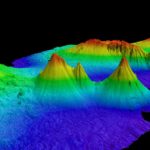IceNet
IceNet – Machine Learning for Seasonal Sea Ice Forecasting
- Start date
- 1 September, 2019
- End date
- 1 December, 2025
IceNet is a probabilistic, deep learning sea ice forecasting system developed by an international team and led by British Antarctic Survey and The Alan Turing Institute [Andersson et al., 2021]. IceNet has been trained on climate simulations and observational data to forecast the next 6 months of monthly-averaged sea ice concentration maps. IceNet advances the range of accurate sea ice forecasts, outperforming a state-of-the-art dynamical model in seasonal forecasts of summer sea ice, particularly for extreme sea ice events. This step-change in sea ice forecasting ability brings us closer to conservation tools that mitigate risks associated with rapid sea ice loss.
Links
- Deep Learning Model @ GitHub, Tom Andersson (Lead Developer)
- IceNet Pipeline @ GitHub, James Robinson and James Byrne (Developers)
- Demonstrator / Python Notebook, Alejandro Coca Castro (Author), Tom Andersson and Nick Barlow (Reviewers)
- including a Binder notebook to try it out yourself (takes around 5 minutes to load)
- Data @ Polar Data Centre
News, Blogs and Podcasts
- “Predicting September 2021 Arctic sea ice using artificial intelligence”, British Antarctic Survey, by Tom Andersson, 24-Sept-2021
- “On Thin Ice: Arctic AI Model Predicts Sea Ice Loss”, nVidia, August 2021
- “As the Arctic Warms, AI Forecasts Scope Out Shifting Sea Ice”, Wired, 3-Nov-2021
- “How AI can help forecast how much Arctic sea ice will shrink”, Science News, September 2021
- “Could AI Be Useful for Arctic Communities Facing Sea Ice Loss?”, Eos, October 2021
- BBC World Service Podcast, Tom Andersson, September 2021
- “Sea ice loss in Arctic could be predicted six months in advance thanks to artificial intelligence system that gives scientists an early warning system to help wildlife”, The Mail Online, August 2021
- BAS Press Release, 26-Aug-2021
- Turing Press Release, 26-Aug-2021
- “A new age of Arctic science discovery – the AI way”, The Alan Turing Institute, April 2020
- Seasonal sea ice forecasting
- Provide decision support information for wildlife conservation efforts
- Aid efficient route-planning for the RRS Sir David Attenborough ship and autonomous underwater vehicles (AUVs)
- To help understand the drivers of sea ice change using explainable AI methods
James Byrne
Principal Software Engineer
Digital Innovation Team, Artificial Intelligence (AI) Lab, BAS IT team
Scott Hosking
Environmental Data Scientist
Artificial Intelligence (AI) Lab, BAS Science Strategy Executive Group
Martin Rogers
Machine Learning Research Scientist
Artificial Intelligence (AI) Lab, BAS Science Strategy Executive Group



